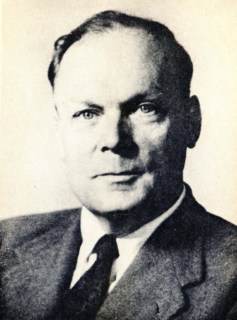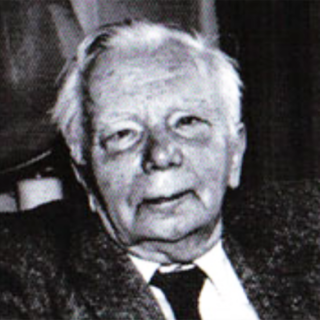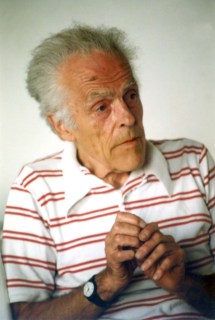The nature of “truths”
When, as a young man, I went to university to study history, I was fortunate to have as one of my my tutors K.B McFarlane, who has been described as the most influential Medieval historian of the 20th century. Of the many things he taught me, perhaps the most enduring concerned the nature of “truths”.
In the course of a general conversation on essay writing, I confessed my horror at the idea of committing anything half-baked to paper and deplored the unenviable predicament in which this placed me. As a raw undergraduate under constant time pressure (two essays a week and an analysis of a constitutional document), I felt there to be no possibility of fitting in the research necessary for providing satisfactory answers to the essay questions that I was being given. My tutor seemed surprised. He said that this was a problem that had only caught up with him in later life (possibly explaining his growing reluctance to publish his own work). He then told me that when he was a student, a number of his contemporaries, being primarily interested in non-academic aspects of university life, left themselves too little time for their studies. To help these fun-loving friends with their logistic problem, the precocious undergraduate had offered to write their essays for them.
When he did so, he quite frequently found himself faced with having to produce more than one answer to the same question. To make life more interesting, he challenged himself to make the arguments used in the different essays as unlike one another as he reasonably could within the constraints provided by the “facts” at his disposal. I felt, “how marvelous to be free to generate different and, even, incompatible “truths” from the same material, how instructive, how creative and how salutary.”

A liberation
It was a profound turning point in my intellectual life. This open-minded approach to the nature of “truths” enabled me to have a much more relaxed attitude to making sense of historical events. Ever since, I have ceased to regard the aim of the historian as presenting irrefutable conclusions, based on unambiguous evidence. Now, I take pleasure in looking for alternative ways of making sense out of the material at my disposal.
This game-playing attitude to the nature of “truths” has been of great value in the evolution of the ideas presented in my books on painting, drawing and creativity. Among other things, it has influenced the way I have told the story of Modernism in Painting, which plays an important role in all of them.
My understanding of this subject was hugely influenced by my two main art teachers, Marian Bohusz-Szyszko and Michael Kidner. It was they who gifted me the issues and ideas that set me on my personal journey of discovery. Hardly surprisingly, their selections of “facts”, and the interpretations they based on them, related to their personal history of concerns as artists. This is probably why, the stories they told were so different in their selection and interpretation of content, from those presented by art historians and critics. Presumably, it is also why I have been unable to find some of the “truths” they communicated in the writings of others.
Was what my teachers taught me true?
Two of the now inaccessible sources upon which I built my life both as an artist and as a teacher were:
- The dogmas of Marian Bohusz-Szyszko, which, according to him, embodied, “all you need to know about painting”.
- The account of the origins of American Abstract Expressionism given to me by Michael Kidner, which focused on the value of what he termed the “propositional approach”.*
Both were the products of attempts to abstract an essence from complex issues. Both have the virtue of presenting an easy-to-follow blend of simplicity and a clarity. However, it seems that these desirably qualities could only come at the expense of nuancing, or even of suppressing, potentially contradictory detail. Accordingly, the question arises as to whether what was lost in the synthesising process diminishes the value of what was gained.


Does it matter what their simplifications leave out?
In my case, there were two reasons why the answer to this question turned out to be “no”. The first was that the simplifications proved to be enormously helpful when I applied them in practice. Right or wrong, what they did for me was to provide clear route maps to follow. These not only opened up new ways of thinking about paintings but also, quite as significantly, new ways of feeling about them.
The second reason was more a matter of my personality. I have to admit that I am temperamentally unsuited to following route maps blindly: There was always a part of me that thought of my paintings as tests of my teacher’s beliefs. In other words, I could not help thinking of them as experiments.** My luck lay in the number of fruitful questions that these generated and the richness of the material that was revealed in the course of my attempts to find answers to them. As it turned out, the research that these triggered led me to delve into a wide range of sources of which the most important were:
- Books on the practice of painting and drawing.
- The history of the ideas of artists and art teachers.
- The science of visual perception.
What I found led me to frequent questioning of widely accepted norms. I was shocked by number of accredited “facts” I came across that turned out to be either misleading or simply untrue, not least among them ones that claimed to have scientific backing.
Can my truths be trusted?
Faced with this predicament, I felt compelled to look for more reliable “truths” and over the years I am confident that I have done so. However, two questions arise:
- Can my alternative “truths” can be trusted?
- Are they are of practical use.
My attempts at comprehensive answers to these questions provide the main subject matter of my teaching and my writings. In my books, as well as explaining some of the numerous ways they can be of practical use, I give substantial evidence as to why they can be trusted. I have already begun the process of sharing some of this with readers of my Posts, such as the ones on “The Venetian Colourists“ and “Colour in Painting“. And, I intend to add many more in the coming weeks and months.
* I intend to elaborate on the “propositional approach” in a later Post that will discuss Michael’s work and ideas.
** Also in a later Post, I intend to submit a Post on the “Art/Science debate”. In this I quote John Constable as saying: “Painting is a science, and should be pursued as an enquiry into the laws of nature. Why then should not painting be regarded as a branch of natural philosophy, of which the pictures are the experiments?”
–
Click here for lists of other Posts
This is a fascinating reflection of how we have a tendency to quickly determine what certain ‘facts’ mean without leaving much elbow room for alternative interpretations. It is refreshing to read about this particularly in relation to painting. Thank you!
A refreshing reminder to not stop short when we arrive at a “truth”, but to continue on to its many, inevitable declinations. Thank you!
yet more fascinating food for thought
I love this post. Seems we have a yearning or a need for absolutes, secure structures, rules and sign posts. Because we now have access to the untruths we’ve been told, we don’t trust anymore. It’s good to see if we can find the kernel of truth in everything and not get hung up on the absolutes. And how does this apply to art? On every level – of making it, seeing it, judging it- the whole experience of it.
“These not only opened up new ways of thinking about paintings but also, quite as significantly, new ways of feeling about them.”
This was my favorite part as this seems to be the one that changes most for me…how do I feel, think, or respond to the art. How each day and each change of light can influence how I react…and furthermore…what I do with the experince.
An excellent article Francis, have you considered posting this in French?
You remind me of a joke that was also one of my starting points on a similar journey into the nature of ‘Truth’.
The Rabbis teach new students, everyone knows Jews are forbidden to eat pork or anything in it with pork products? Yes is the inevitable answer from keen new students.
Ok, they say, now find me 10 reasons in the Torah (Old Testament) why Jews must not eat pork.
Off go the keen students and easily find 10 reasons.
Then they are told, right, now find me 10 reasons why Jews should eat pork.
The lesson of course is about the nature of truth and the question “what does this mean”.
In my own life I partly grew up near the battlefield of Hastings and was told what a wonderful benefit the Norman victory was for England; but even at a tender 11 years of age I noticed some disturbing undercurrents.
On visiting the site I ‘felt’ all was not as I’d been told, I sensed a great sadness.
Many adventures later into history have confirmed there is more than one ‘truth’ to what happened in 1066, to King Richard III and even about Brexit; as in history and life so it is with painting.
I’m 100 % with you on this Francis, thank you for expressing the above ‘truths’ so well.